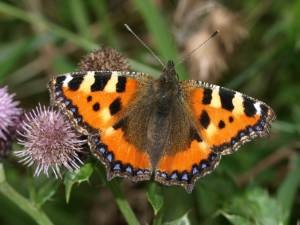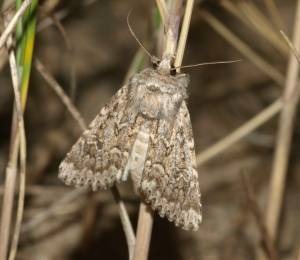Dr Phil Smith’s Wildlife Notes
August 2009
August is usually a good month for colourful butterflies and dragonflies on our duneland but the unsettled weather meant that numbers were lower than hoped for. Nevertheless, there were plenty of Painted Ladies about, the progeny of the spectacular immigration at the end of May. They were joined by Peacocks, the occasional Comma, Red Admiral and even a few Small Tortoishells, a species which has been having a bad time in recent years, due it is thought to the effects of a parasitic fly. These insects could be seen nectaring on flowering Water Mint in wet-slacks throughout the dunes, often accompanied by the Common Blue, described in Victorian times by E.R. Beattie as “the little butterfly gleaming azure in the sun”.

Dragonflies were also disappointing during August, though I manage to find eight different kinds on a tour of some Birkdale Sandhills scrapes on 22nd, including 10 Ruddy Darters, our only nationally notable species. A male Ruddy Darter appeared for the first time at Freshfield Dune Heath Nature Reserve on one of the ponds dug three years ago. These ponds are already proving a rich habitat for aquatic fauna and flora, about 15 of the 20 species of dragonflies and damselflies recorded on the Sefton Coast having been seen there.
A dozen hardy souls joined Richard Burkmar and Graham Jones on the evening of 21st to see one of Britain’s rarest moths, the fabled Sandhill Rustic. Searching Birkdale Green Beach with torches, we eventually saw and photographed several of these well-camouflaged insects, which are unique to a handful of coastal sites in North Wales and Northwest England. A few days later, Richard and Graham found another flourishing colony on embryo dunes at Southport, opposite the Marine Lake. This is now the most northerly known population in Britain.

On 29th, I led a well-attended guided walk for the recently formed West Lancashire Wildlife group to Cabin Hill NNR. We were able to enjoy the best display of Grass-of-Parnassus on the coast and the rich diversity of plants that have colonised a dune-slack that was cleared of dense willow scrub in 2005. No less than 140 different plants have been recorded in this slack since 2006, 28 being new to the reserve. I always like to finish on a “high note” so we climbed up to the Devil’s Hole, a huge blow-out just north of the reserve which originated during the Second World War. The floor of the blow-out reached the water-table some years ago and now supports interesting dune-slack vegetation, including many orchids.
The second half of the month was largely devoted to a major survey of one of the country’s most rapidly declining plants, the Field Gentian (Gentianella campestris). Although widespread in Scotland, it is now said to be very rare indeed in England south of the Lake District and adjacent Pennines. However, Ainsdale Sand Dunes National Nature Reserve supports great drifts of these splendid purple-blue flowers and, belying national trends, they seem to be increasing and especially in the Dune Restoration Area where scrub and pine trees were removed in the 1990s. By the end of the month, Patricia Lockwood and I had counted and mapped over 35,000 gentians and we hadn’t even got to the best area.
